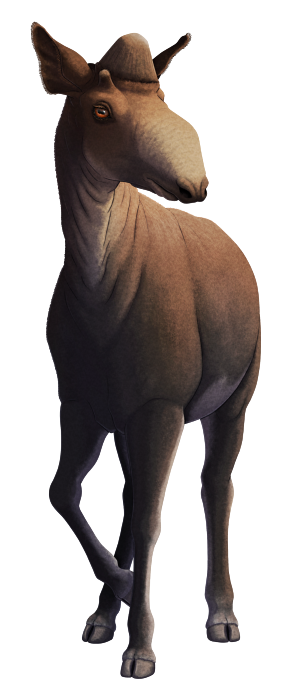Tsaidamotherium hedini was a ruminant ungulate living around 11 million years ago during the late Miocene, in the northeastern part of the Tibetan Plateau in what is now Northwestern China. Although it’s known only from partial skull remains it was probably similar in body size to a large sheep, about 80cm tall at the shoulder (2’7″).
Since its discovery in the 1930s it’s traditionally been classified as part of the muskox lineage, but in 2022 it was proposed to actually be a giraffoid very closely related to the newly-discovered Discokeryx.
Tsaidamotherium had some extremely unusual headgear, with highly asymmetrical “horns” (actually ossicones if was a giraffoid). The left one was small and positioned above the eye, while the right one was shifted back and towards the middle of the forehead, and was expanded out into a wide bony disk that would have supported a large helmet-like domed keratin covering.
Its skull also had a very large nasal cavity resembling that of the modern saiga antelope, suggesting it may have convergently evolved a similar sort of complex air-filtering snout to deal with dry cold air in its mountainous habitat.

